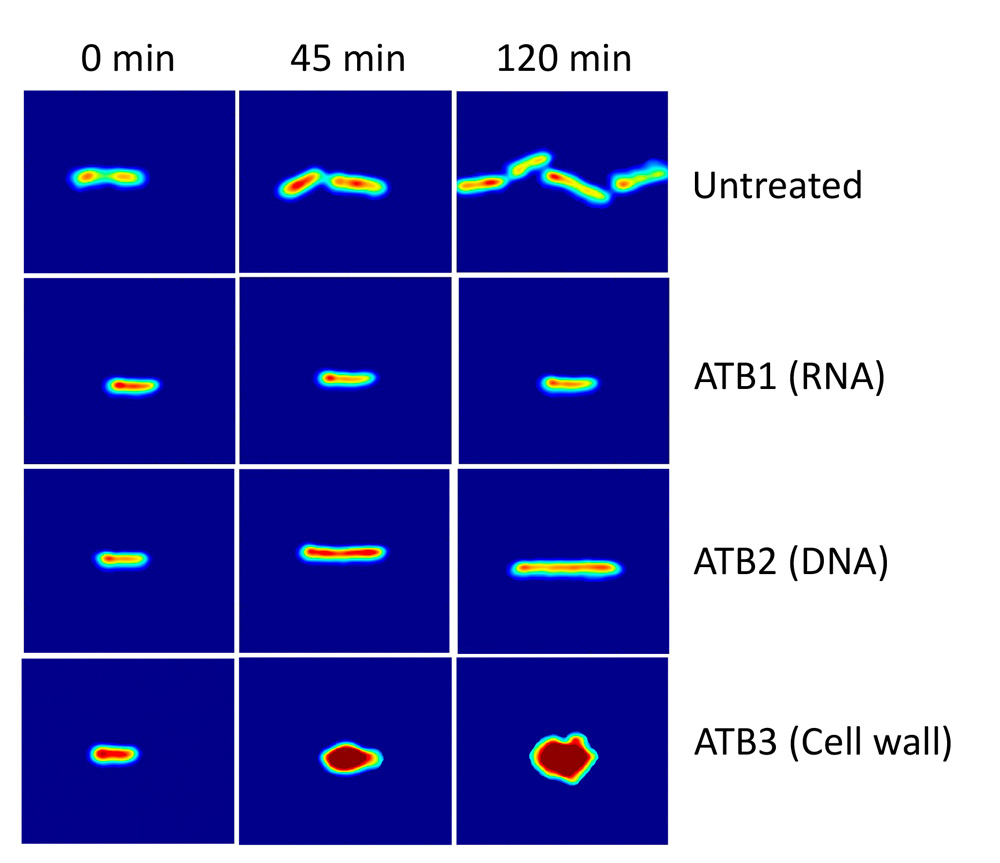Assess the novelty of the mechanism of action of new antimicrobials

Case study
Assess the novelty of the mechanism of action of new antimicrobials
Pharmaceutical industries have a huge interest in developing new antimicrobials with new mechanisms of action (MoA) in order to combat antimicrobial resistance.
Characterizing MoA along the drug development process, from hit to preclinical, is very complex and involves combinations of technologies. Reference assessment methods of early-stage MoA novelty are labor-intensive and costly.
As expressed by pharmaceutical companies and others, the need is « A more economical and faster technology, to perform alternative phenotypic screening of molecules, and be able to understand complex therapeutic solutions”
BIOASTER proposes a phenotypic, cost-effective, rapid (<2h), and label-free technology to classify antimicrobial mechanism of action (MoA) and assess novelty from time-lapse quantitative phase images of bacteria. The technology relies on time-lapse Digital Inline Holographic Microscopy coupled with artificial intelligence.
The robust, label-free sample preparation guarantees genericity and minimal impairment of the bacterial behavior, while the single-cell approach enables sub-population specificity to be detected. No limitation regarding molecule combinations or the use of alternative therapeutic approaches is expected.
BIOASTER brought together advanced optics (computational microscopy approaches) and artificial intelligence experts (Deep convolutional neural network), intending to assess fast classification and novelty assessment of antimicrobial modes of actions on the basis of label-free quantitative phase imaging of a treated bacterial target.
We have developed a full pipeline from sample preparation, incubation image database acquisition, time-lapse image processing and deep-learning based algorithms for classifying MoA. A novelty assessment tool is under development.
We look forward to sharing the results of this proof of concept with partners looking for developing new antimicrobial solutions
You want to know more about this case study? Contact us!